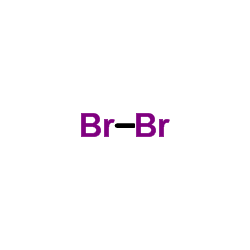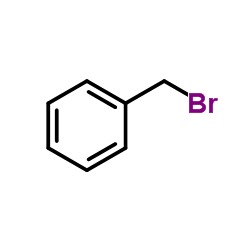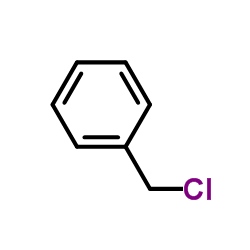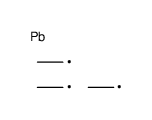41141-89-3
| Name | bromo(triethyl)plumbane |
|---|---|
| Synonyms |
triethyllead bromide
Triethylbleibromid Triaethyl-brom-plumban Triaethylbleibromid Plumbane,bromotriethyl |
| Boiling Point | 218.8ºC at 760 mmHg |
|---|---|
| Molecular Formula | C6H15BrPb |
| Molecular Weight | 374.28700 |
| Flash Point | 86.2ºC |
| Exact Mass | 374.01200 |
| LogP | 3.38650 |
|
Version 1.4
Regulation (EC) No 1907/2006 1 - Product and Company Information Product NameBROMOTRIETHYLLEAD - 50 MG 2 - Hazards Identification SPECIAL INDICATION OF HAZARDS TO HUMANS AND THE ENVIRONMENT May cause harm to the unborn child. Also very toxic by inhalation,
in contact with skin and if swallowed. Danger of cumulative effects. Very toxic to aquatic organisms, may cause long-term adverse effects in the aquatic environment. Possible risk of impaired fertility. Repr. Cat.1 Repr. Cat.3 3 - Composition/Information on Ingredients Product NameCAS #EC noAnnex I Index Number BROMOTRIETHYLLEAD41141-89-3 None082-002-00-1 FormulaC6H15BrPb Molecular Weight 374,2900 AMU 4 - First Aid Measures AFTER INHALATION If inhaled, remove to fresh air. If not breathing give artificial respiration. If breathing is difficult, give oxygen. AFTER SKIN CONTACT In case of skin contact, flush with copious amounts of water for at least 15 minutes. Remove contaminated clothing and shoes. Call a physician. AFTER EYE CONTACT In case of contact with eyes, flush with copious amounts of water for at least 15 minutes. Assure adequate flushing by separating the eyelids with fingers. Call a physician. AFTER INGESTION ALDRICHwww.molbase.com If swallowed, wash out mouth with water provided person is conscious. Call a physician immediately. 5 - Fire Fighting Measures EXTINGUISHING MEDIA Suitable: Water spray. Carbon dioxide, dry chemical powder, or appropriate foam. SPECIAL RISKS Specific Hazard(s): Emits toxic fumes under fire conditions. SPECIAL PROTECTIVE EQUIPMENT FOR FIREFIGHTERS Wear self-contained breathing apparatus and protective clothing to prevent contact with skin and eyes. 6 - Accidental Release Measures PERSONAL PRECAUTION PROCEDURES TO BE FOLLOWED IN CASE OF LEAK OR SPILL Evacuate area. PROCEDURE(S) OF PERSONAL PRECAUTION(S) Wear self-contained breathing apparatus, rubber boots, and heavy rubber gloves. METHODS FOR CLEANING UP Sweep up, place in a bag and hold for waste disposal. Avoid raising dust. Ventilate area and wash spill site after material pickup is complete. 7 - Handling and Storage HANDLING Directions for Safe Handling: Do not breathe dust. Do not get in eyes, on skin, on clothing. Avoid prolonged or repeated exposure. STORAGE Conditions of Storage: Keep tightly closed. 8 - Exposure Controls / Personal Protection ENGINEERING CONTROLS Safety shower and eye bath. Use only in a chemical fume hood. GENERAL HYGIENE MEASURES Wash contaminated clothing before reuse. Wash thoroughly after handling. PERSONAL PROTECTIVE EQUIPMENT Respiratory Protection: Use respirators and components tested and approved under appropriate government standards such as NIOSH (US) or CEN (EU). Where risk assessment shows air-purifying respirators are appropriate use a full-face particle respirator type N100 (US) or type P3 (EN 143) respirator cartridges as a backup to engineering controls. If the respirator is the sole means of protection, use a full-face supplied air respirator. Hand Protection: Compatible chemical-resistant gloves. Eye Protection: Chemical safety goggles. 9 - Physical and Chemical Properties ALDRICHwww.molbase.com AppearancePhysical State: Solid PropertyValueAt Temperature or Pressure pH N/A BP/BP RangeN/A MP/MP RangeN/A Flash PointN/A FlammabilityN/A Autoignition TempN/A Oxidizing Properties N/A Explosive Properties N/A Explosion LimitsN/A Vapor PressureN/A Partition Coefficient N/A ViscosityN/A Vapor DensityN/A Saturated Vapor Conc. N/A Evaporation RateN/A Bulk DensityN/A Decomposition Temp.N/A Solvent ContentN/A Water ContentN/A Surface TensionN/A ConductivityN/A Miscellaneous DataN/A SolubilityN/A 10 - Stability and Reactivity STABILITY Stable: Stable. Materials to Avoid: Strong oxidizing agents, Strong acids. HAZARDOUS DECOMPOSITION PRODUCTS Hazardous Decomposition Products: Nature of decomposition products not known. HAZARDOUS POLYMERIZATION Hazardous Polymerization: Will not occur 11 - Toxicological Information SIGNS AND SYMPTOMS OF EXPOSURE To the best of our knowledge, the chemical, physical, and toxicological properties have not been thoroughly investigated. Exposure can cause: Anemia. Lead salts have been reported to cross the placenta and to induce embryo- and feto- mortality. They also have teratogenic effect in some animal species. No teratogenic effects have been reported with exposure to organometallic lead compounds. Adverse effects of lead on human reproduction, embryonic and fetal development, and postnatal (e.g., mental) development have been reported. Excessive exposure can affect blood, nervous, and digestive systems. The synthesis of hemoglobin is inhibited and results in anemia. If left untreated, neuromuscular dysfunction, possible paralysis, and encephalopathy can result. Additional symptoms of overexposure include: joint and muscle pain, weakness of the extensor muscles (frequently the hand and wrist), headache, ALDRICHwww.molbase.com dizziness, abdominal pain, diarrhea, constipation, nausea, vomiting, blue line on the gums, insomnia, and metallic taste. High body levels produce increased cerebrospinal pressure, brain damage, and stupor leading to coma and often death. ROUTE OF EXPOSURE Skin Contact: May cause skin irritation. Skin Absorption: May be fatal if absorbed through skin. Eye Contact: May cause eye irritation. Inhalation: Material may be irritating to mucous membranes and upper respiratory tract. May be fatal if inhaled. Ingestion: May be fatal if swallowed. TARGET ORGAN INFORMATION Nerves. Blood. Kidneys. Female reproductive system. Male reproductive system. CHRONIC EXPOSURE - TERATOGEN Result: May cause congenital malformation in the fetus. CHRONIC EXPOSURE - REPRODUCTIVE HAZARD Result: May cause reproductive disorders. CMR CAT.: Carc. Cat.3 12 - Ecological Information No data available. 13 - Disposal Considerations SUBSTANCE DISPOSAL Contact a licensed professional waste disposal service to dispose of this material. Observe all federal, state, and local environmental regulations. 14 - Transport Information RID/ADR UN#: 3467 Class: 6.1 PG: II Proper Shipping Name: Organometallic compound, toxic, solid, n.o.s. IMDG UN#: 3467 Class: 6.1 PG: II Proper Shipping Name: Organometallic compound, toxic, solid, n.o.s. Marine Pollutant: Yes Severe Marine Pollutant: No Technical Name: Required IATA UN#: 3467 Class: 6.1 PG: II Proper Shipping Name: Organometallic compound, toxic, solid, n.o.s. ALDRICHwww.molbase.com Inhalation Packing Group I: No Technical Name: Required 15 - Regulatory Information CLASSIFICATION AND LABELING ACCORDING TO EU DIRECTIVES ANNEX I INDEX NUMBER: 082-002-00-1 NOTA: A,E, 1 INDICATION OF DANGER: T+-N Very toxic. Dangerous for the environment. R-PHRASES: 61-26/27/28-33-50/53-62 May cause harm to the unborn child. Also very toxic by inhalation, in contact with skin and if swallowed. Danger of cumulative effects. Very toxic to aquatic organisms, may cause long-term adverse effects in the aquatic environment. Possible risk of impaired fertility. S-PHRASES: 53-45-60-61 Restricted to professional users. Attention - Avoid exposure - obtain special instructions before use. In case of accident or if you feel unwell, seek medical advice immediately (show the label where possible). This material and its container must be disposed of as hazardous waste. Avoid release to the environment. Refer to special instructions/safety data sheets. Caution: Substance not yet fully tested (EU). COUNTRY SPECIFIC INFORMATION Germany WGK: 3 Self-Classification 16 - Other Information WARRANTY The above information is believed to be correct but does not purport to be all inclusive and shall be used only as a guide. The information in this document is based on the present state of our knowledge and is applicable to the product with regard to appropriate safety precautions. It does not represent any guarantee of the properties of the product. Inc., shall not be held liable for any damage resulting from handling or from contact with the above product. See reverse side of invoice or packing slip for additional terms and conditions of sale. Copyright 2010 Co. License granted to make unlimitedpaper copies for internal use only. DISCLAIMER For R&D use only. Not for drug, household or other uses. ALDRICHwww.molbase.com SECTION 16 - ADDITIONAL INFORMATION N/A |
| HS Code | 2931900090 |
|---|
|
~30% 
41141-89-3 |
| Literature: Mueller, Thomas; Bauch, Christian; Ostermeier, Markus; Bolte, Michael; Auner, Norbert Journal of the American Chemical Society, 2003 , vol. 125, # 8 p. 2158 - 2168 |
|
~% 
41141-89-3 |
| Literature: Hein; Klein Chemische Berichte, 1938 , vol. 71, p. 2382 Full Text Show Details Gilman; Bailie Journal of the American Chemical Society, 1939 , vol. 61, p. 731,734 |
|
~% 
41141-89-3 |
| Literature: Friedrich, Edwin C.; Abma, Charles B.; Vartanian, Paul F. Journal of Organometallic Chemistry, 1980 , vol. 187, # 2 p. 203 - 212 |
| Precursor 4 | |
|---|---|
| DownStream 8 | |
| HS Code | 2931900090 |
|---|---|
| Summary | 2931900090. other organo-inorganic compounds. VAT:17.0%. Tax rebate rate:13.0%. Supervision conditions:AB(certificate of inspection for goods inward,certificate of inspection for goods outward). MFN tariff:6.5%. General tariff:30.0% |









